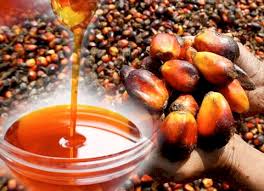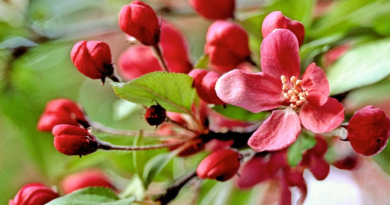All you Need to Know About Cucumber Farming Business
Cucumber, Cucumis sativus, is part of the Cucurbitaceae family and is thought to have originated in Nepal. Cucumbers are frost sensitive and are cultivated in the open or in greenhouses, depending on the type. Greenhouse cucumbers are parthenocarpic (produce fruit without fertilization of ovules), and the fruit are usually seedless.
The fruit has a mild flavour, with a thin, tender, dark green skin that does not require peeling. The general fruit shape is roughly cylindrical, elongated, with tapered ends and range from 12-38cm when ready for harvest. Cucumbers are usually eaten as in salads, or as accompaniments to various foods.
Adaptability of Cucumber Plants
(1) Climatic Requirements
• Optimum germination temperature: 25-28°C, night temperature not lower than 20°C.
• Optimum growth temperature: 25-30°C, night temperature not lower than 18°C.
(2) Soil Requirements
Greenhouse or tunnel cucumbers are usually planted in 15ℓ or 20ℓ bags filled with sawdust or a combination of coconut fibre, peat, perlite, polystyrene, or bark.
A good potting mixture has good water holding capacity, adequate drainage and should not decompose rapidly. Peat, vermiculite and coconut fibre are the most popular amendments added for increased water holding.
Perlite and horticulture grade sand are commonly used to improve drainage.
Some growers prefer to plant in soil. Cucumber plants are deep-rooted crops, which grow best in well-drained, fertile, soil that is low in soluble salts and free of soil-borne diseases.
Read Also: How to Start Cucumber Farming Business – (Beginners Guide)
The soil should be at least 1.2m deep and sandy loam soil is preferable to light sand or clay. Well-composted organic matter may be worked into the soil before planting to increase nutrient levels and water-holding capacity.
Seeds can be directly sown, but are usually germinated in seedling trays and then transplanted.
Cucumber roots are very sensitive and care must be taken during transplant not to damage them. The use of a sterile seedling medium is recommended to prevent disease infection.
(3) Product Types
3.1 GreenHouse Cucumber Types
The most popular types grown in greenhouses are the long, seedless hybrid F1 varieties often referred to as English cucumbers. These seedless varieties are gynoecious in flowering habit (produce only female flowers), and produce parthenocarpic fruit (not needing pollination for fruit development).
The fruit have thin, edible, smooth green skin, which can have slight longitudinal ridges/ribs. Varieties with shorter fruit, known as midi cucumbers are also gown for some markets.
3.2 Traditional Seeded / Field Cucumber Types
The traditional seeded varieties produce both male and female flowers and require pollination to form healthy fruit, which have seeds and white spines.
These are more suited to open field production, and are commonly called Field Cucumbers. In order for pollination to take place pollen must be transferred from the male flowers to female flowers.
Outdoors, bees normally do the pollination under good weather conditions, but in greenhouses it is the grower’s responsibility to transfer pollen. When cucumbers are not properly pollinated, the fruit will be misshapen and poorly developed, especially on the blossom end of the fruit.
The fruit should be harvested when they have reached full diameter but while the seeds are still small and soft. If the fruit are light green or yellow or have hard mature seeds, the fruit are considered over-mature.
Cucumber Cultivation Practices

1. Germination and Transplanting
The optimum germination temperature for cucumber seed is 25°C to 28°C. Daytime temperatures should be maintained between 23°C to 25°C and night temperature not lower than 18°C.
Seedling must be kept moist but not water soaked. Seedlings in seeding trays could be transplanted to 15ℓ or 20ℓ bags three to four weeks after germination, or the seed can be planted directly into the planting bags.
Begin fertilizing three days after transplanting or when true leaves have begun to emerge.
Plants should be watered frequently with the fertilizer solution. A minimum of 14 hours of strong direct light is required for developing seedlings.
Read Also: 13 Health Benefits of Cucumbers
2. Planting Spacing
The light availability, production system and trellising method will affect the exact spacing required.
Generally, under good light conditions, 2.2 to 2.5 plants per square meter should be sufficient.
This should ensure good air circulation and adequate light for fruit production. A well ventilated tunnel will have lower disease pressure and will have easier access for spraying of pest and diseases.
3. Fertilization and Irrigation
In order to prevent over/under fertilizing, it is of utmost importance to have an analysis of the soil and water used for cucumber growing. This should be taken into account when calculating the fertigation program.
The ECW (electrical conductivity of the water) must be taken into account when determining what the total EC should be.
EC and pH should be checked when the fertigation, mix flows out of the tank, again where it flows into the growing media or soil, and once more when it flows out of the growing media or soil.
Generally, to lower the pH either nitric, sulfuric or phosphoric acid may be recommended.
Potassium-hydroxide is usually used when it is needed to raise the pH. If the source water is alkaline as a result of high bicarbonate concentrations, the pH should be amended before the fertilizer salts are added to prevent precipitation.
4. Trellising and Pruning
To obtain optimum cucumber production, a proper balance is needed between the vegetative growth and fruit load.
This balance is achieved by constant pruning of shoots, foliage, fruit and flowers.
If the canopy of leaves is too dense it will shade fruits from sunlight, causing them to be pale or unevenly colored.
If fruit are not pruned and too many are allowed to form at any one time, a large proportion may be aborted, malformed or poorly colored because the plant may not have sufficient reserves.
Therefore, generally only one fruit should be allowed to develop in a leaf axil, although vigorous cultivars can sometimes mature more than one fruit at a node. Short, midi cucumber types will support several fruit per node.
Cucumbers are trellised on a string or wire system. Various trellising methods are used by different growers. The main aim should be to capture sunlight uniformly throughout the greenhouse.
Read Also: Planting, Growing and Harvesting Bell Peppers (Capsicum annuum)
5. Harvesting
Cucumbers are harvested as immature fruit when full length has been reached. At suitable harvest maturity, a jellylike material has started to form in the seed cavity. Cucumber production will be reduced if the fruit are left on the plant for too long.
Cucumbers are hand harvested, normally 3 times per week, depending on the weather and growth stage of the plant.
Harvest at the coolest time of day and avoid any heating of the harvested product. To reduce damage and disease a sharp clean tool should be used to cut the fruit from the plant.
The harvested fruit should be placed in clean harvesting containers, kept in the shade, and taken to the pack house as soon after harvest as possible.
Cucumbers should be handled carefully and care taken not to damage the thin skin.
6. Post-Harvest Handling
Cucumbers lose moisture quickly and have the tendency to soften during storage. Marketable cucumbers should be sorted according to size and quality and individually wrapped in clear plastic.
The optimum storage temperature for cucumbers is 10-12.5ºC, at relative humidity of 95% RH.
Storage or transit temperatures below this range should be avoided as this will result in chilling injury after 2-3 days.
Read Also: How Long Does It Take a Hazelnut Tree to Produce Nuts?









